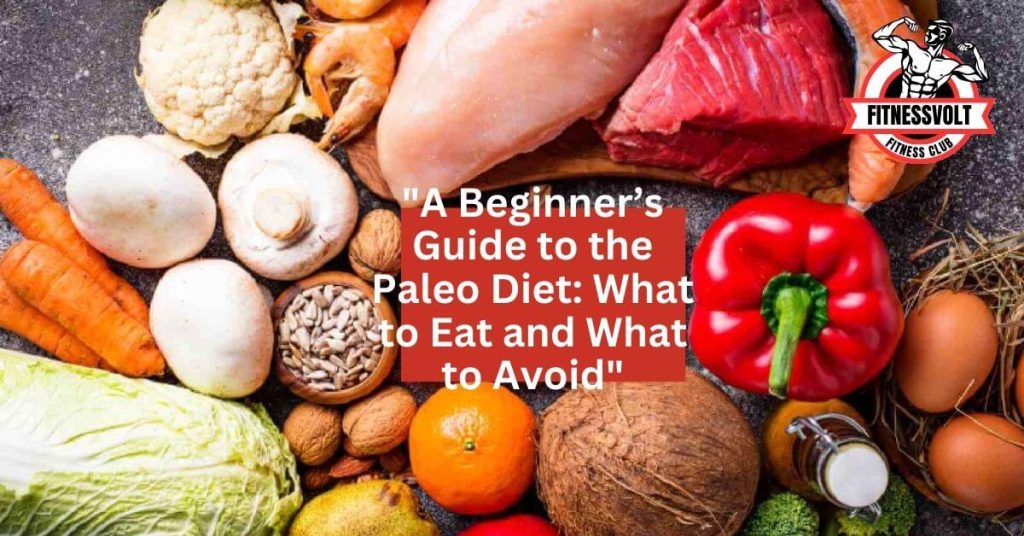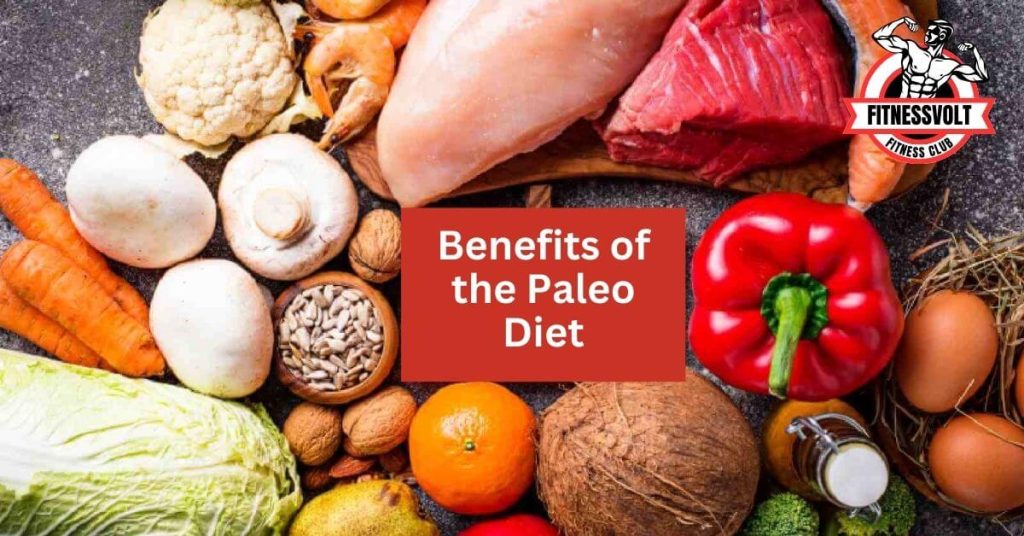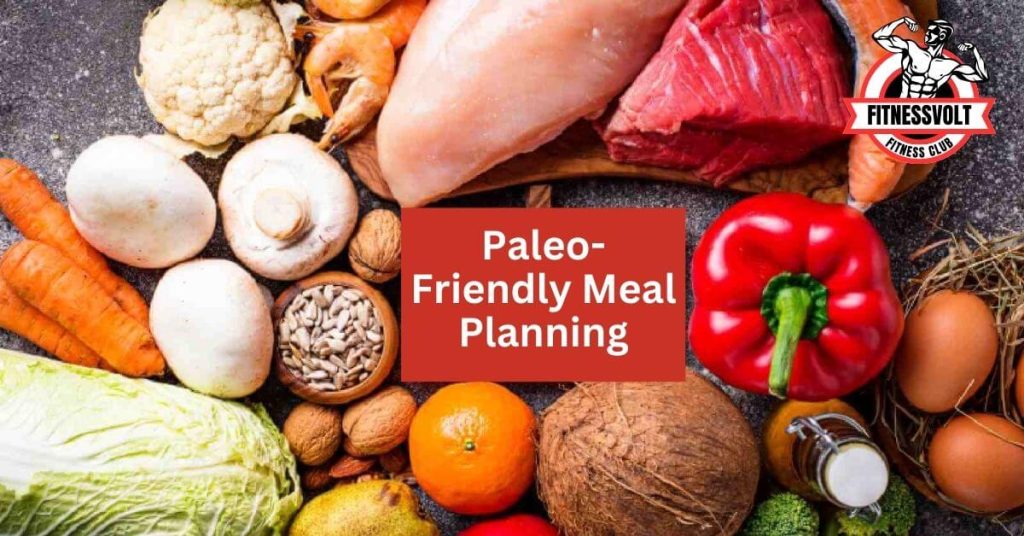Think about eating like our primal ancestors did before agriculture and industrial food processing. This is the idea behind the Paleo diet a return to a time when humans hunted and gathered their food. This way of eating works on the premise that by consuming meals that you were biologically adapted to eat, you can experience positive health and well-being outcomes.
With this guide, we will take a deep dive into the Paleo diet talking about how it helps and hampers you and at last how you can adopt things in your lifestyle.

What is the Paleo Diet?
Human diets during the Paleolithic era (suggested to be 2.5 million years ago up until 10,000 years ago) are what inspired the Paleo diet in the first place. The fundamental rule is basic: If it’s not something that was food 10,000 years ago during farming times, then it doesn’t belong in your diet. Which is essentially eating whole unprocessed foods (meat, fish, mollusks-shellfish- and invertebrates without the shells, my apologies), while excluding grains, legumes, and dairy. It means no bread, no rice, no ice cream whatsoever.
Paleo is not so much a weight loss diet, as it is actually a way to align the way we eat with our genetics to promote overall health. Advocates will say that our bodies have not evolved to eat the current diet, heavy in sugar, processed foods, and grains.
The Science Behind the Paleo Diet
Based on the concept of evolutionary nutrition, as our hunter-gatherer ancestors did millennia ago and away from their food list. The idea is that as humans, our genome has hardly changed since the Paleolithic era and so for us to flourish optimally we should eat much like our ancestors.
Because Macronutrient Ratios on the Paleo Diet are High Protein, Moderate Fat, and Low Carb (coming mainly from fruits and veggies) This balance between macronutrients is associated with improved blood sugar control, decreased hunger & satiety as well as lower risk for chronic disease.
Studies supporting Paleo diet benefits have shown improved metabolic markers, weight loss, and satiety compared to the standard Western diet.
Benefits of the Paleo Diet

Why consider going Paleo? Here are some potential benefits:
1. Better digestive health: Paleo eliminates some common irritants (grains, legumes) which can be difficult for many/certain people to digest. In short, all of this can improve gut health and lessen symptoms associated with bloated bellies and gas.
2. Weight Loss: One of the key benefits of following a Paleo diet specifically for anyone who has an excessive amount of weight or fat to lose is that it can help you to lose weight. This higher protein is one of the best ways to maintain muscle mass while losing fat.
3. High Energy: in the Morning- with stabilized blood sugar levels, many people, feel increased energy and mental clarity on this eating plan since their body is not going through a sugar crash.
4. Less Inflammation and Disease Risk: Restricting inflammatory foods, like processed vegetable oils, grains–due to gluten intolerance and sugar can reduce inflammation in the body that leads to conditions like coronary heart disease, diabetes, or cancer.
Potential Risks and Criticisms
As with any diet, it’s important to consider the potential downsides:
1. Nutrient Deficiencies: Like going dairy and grain-free, removing the legumes and white potatoes can result in deficiencies in calcium, vitamin D, etc. if not compensated for (see what I did there?).
2. Expense and accessibility: Paleolithic foods include high-quality meats, fruits, vegetables, and nuts most of which are organic in nature or can be hunted down.
3. The Environmental Effect of a Meat-Based Diet: The reliance on animal products in the Paleo diet has been criticized for sustainability and environmental impact as well, due to basically encouraging people to eat more meat.
4. Critics Deride: the Paleo Diet Some health professionals argue that the diet is too restrictive (for example, grains are banned) and not firmly rooted in an accurate reflection of how our distant ancestors ate — they had a more varied diet with other foods previously thought to be absent from prehistoric diets.
What to Eat on the Paleo Diet
Success on the Paleo diet starts with learning what is on and what is off of the menu:
Approved Foods List:
- Lean Meats and Fish: Grass-fed beef, wild-caught fish, poultry, game meats
- Fruits and Vegetables: All types, emphasizing non-starchy vegetables and lower-sugar fruits.
- Almonds, pecans, flaxseeds, and chia seeds to name a few nuts and seeds
- Healthy Fats- Avocados, olive oil, coconut oil, and nuts.
Foods to Avoid:
- Cereals and Pulses: wheat, rice, oats, beans and lentils
- Afro-dams-74Dairy (milk, yogurt, cheese, etc.)
- Key Examples of Processed Foods and Sugars—Anything with excess added sugars, artificial ingredients, or preservatives.
- Some Oils and Fats: Seed oils (rapeseed, safflower), soybean oil, corn oil.
Paleo Diet for Different Goals
The Paleo diet can be tailored to meet specific health and fitness goals:
1. Eat LIKE A CAVEMAN TO SHED POUNDS Low Carb Plan for Weight Loss – Paleo for Weight Loss Ingredients Lean meats, vegetables, and healthy fats How it Works Plants including fruits and veggies is a staple in any weightless plan. Stick with non-starchy vegetables for best results, while keeping carb intake minimal.
2. Try it for: Gaining muscle How to adapt it: Increase protein intake with lots of meat and fish and add starchy veg like sweet potato for energy during your workout.
3. Anti-Inflammatory Lifestyle: Gluten-free, dairy-free all the elements of the Paleo diet make it an anti-inflammatory lifestyle that can help manage things like arthritis and other chronic medical conditions including diabetes and heart disease.
Paleo-Friendly Meal Planning

Planning and preparation are key to sticking with the Paleo diet:
How to Create Balanced Paleo Meals:
- Breakfast: Start your day with a veggie-packed omelet cooked in olive oil, with a side of fresh fruit.
- Lunch: Enjoy a salad with mixed greens, grilled chicken, avocado, and a drizzle of olive oil.
- Dinner: Serve up grilled salmon with roasted vegetables and a side of sweet potato.
- Snacks: Keep it simple with nuts, seeds, or fresh fruit.
Sample One-Week Paleo Meal Plan:
- Monday: Scrambled eggs with spinach (breakfast), chicken salad (lunch), grilled steak with roasted asparagus (dinner).
- Tuesday: Smoothie with almond milk, spinach, and berries (breakfast), lettuce wraps with turkey and avocado (lunch), baked fish with sautéed zucchini (dinner).
- Wednesday: Chia pudding with berries (breakfast), tuna salad with mixed greens (lunch), stir-fry with beef and broccoli (dinner).
Continue this pattern through the week, rotating your favorite Paleo-friendly foods to keep things interesting.
Common Myths About the Paleo Diet
Let’s clear up some misconceptions:
Myth 1: Many people dismiss the Paleo diet as another “fad” but I can assure you it is not or at least not any more so than just about any other diet. The paleo lifestyle has been around for several decades, well before Crossfit, Instagram, and hardcore gym enthusiasts infiltrated mainstream culture.
Myth 2: Paleo is meat-based: Though it is not correct to say that the Paleo diet only revolves around the consumption of animal products, fruits, vegetables as well as healthy fats are included too.
Myth 3: The Paleo Diet is too Restrictive Truth: Yes, it excludes packaged foods, wheat, and dairy. but there are so many variations of meats, vegetables, and fruits you can use in your meals that the diet will fit various tastebuds.
Adapting the Paleo Diet to Modern Life
Here’s how to make the Paleo diet work for you today:
1. How to Make Paleo Cheap and Easy: Purchase bulk, visit farmers’ markets, use frozen veggies for cheaper options
2. How To Eat Paleo In Social Situations- Choose meats and vegetables, and tell your friends who want to go out to dinner the options that suit your paleo diet.
3. How to make Paleo work with other dietary preferences: for example, if you have interests in Keto or Veganism as well, you can adjust the Paleo diet to meet some of those needs and try where there is overlap (plant-based fats, non-starchy vegetables).
How to Get Started with the Paleo Diet
Transitioning to Paleo doesn’t have to be overwhelming:
1. Transition vs. All At Once: Determine if you will transition slowly off non-paleo foods or switch completely to paleo.
2. Paleo Pantry Staples: Fill your pantry with nuts, seeds, oils, and canned/frozen goods and fridge with fresh produce and meats.
3. You only win when you stay on the path to increasing those winning moments and not letting yourself slip up.
Paleo Diet for Special Populations
The Paleo diet can be beneficial for various groups:
1. Import Exercise/Fitness: Paleo for Athletes- High protein and healthy fats to fuel athletic performance, but recovery emphasis is on nutrient-dense foods.
2. Paleo for Women (Pregnancy and Breastfeeding): Nutrient-dense Paleo can encourage healthy growth and development of your baby, while best supplying the mom-to-be with iron, folate, and calcium.
3. If you require 1 gram of protein per kilogram of body weight, paleo could be a great option the anti-inflammatory effects and whole-food focus may help to maintain muscle mass, manage your weight, and decrease the likelihood of age-related chronic diseases.
The Environmental and Ethical Considerations
Following the Paleo diet responsibly includes being mindful of sustainability:
1. Make it more sustainable: When consuming meats, opt for organic or grass-fed varieties (day one) and buy local (day two)` — this ensures you’ll be leaving the land as you found it.
2. Ethical Paleo foods hunting: Go grass-fed, pastured, and wild for all solidarity-produced, compassionate meats.
3. Sustainable Paleo: Along with Plant-Based Meals and Less Food Waste
Monitoring Your Progress
As you follow the Paleo diet, it’s essential to keep track of how you’re doing:
1. Monitoring Weight and Body-Composition: Weigh Yourself & measure changes regularly.
2. Measuring Health Progress: Energy, Digestion and General Well-being
3. Regulate Your Paleo Diet According To Need: 20 Listen to your body and adjust some of the foods based on how you feel.
Conclusion
Let me clarify: the idea of The Paleo diet is simply to eat whole, unprocessed foods that our bodies are evolutionarily designed to ingest. Most people follow a healthful, weight loss protocol by concentrating on nutrient-rich foods and eliminating processed ingredients and experience better overall health. Though of course, just like any diet, there is a right way to do paleo, which is following it with balance and mindfulness. If you are interested in the Paleo diet, though, it is always recommended to consult with a healthcare professional to ensure this diet would be good for you and that you’re getting all of your nutritional needs covered.


